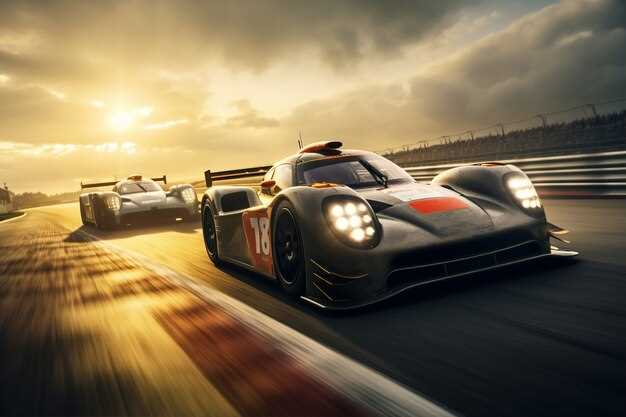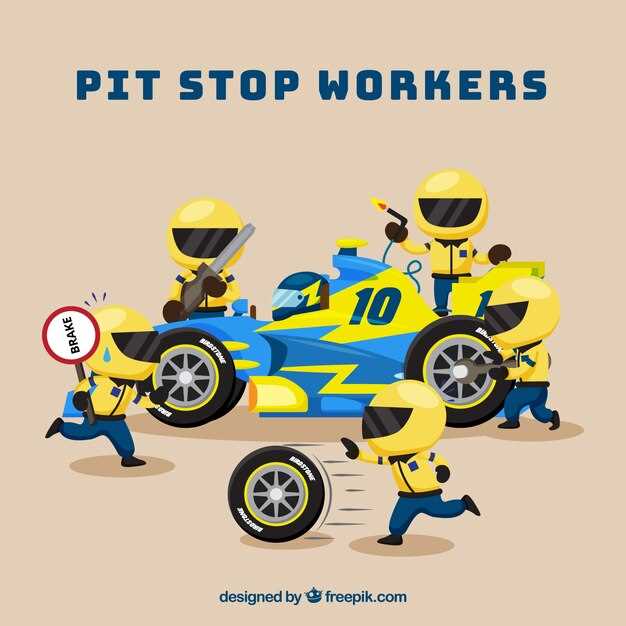
The world of automotive racing has been profoundly influenced by a select group of pioneers whose ingenuity and passion set the stage for modern motorsport. These individuals not only pushed the boundaries of engineering but also embraced the thrill and spirit of competition. Their innovations and commitment to speed transformed what began as a simple pastime into a vibrant, technologically advanced sport that captivates millions today.
From the early days of vintage cars racing on dusty roads to the slick circuits of contemporary racing, the journey has been marked by remarkable achievements. These pioneers introduced groundbreaking technologies, developed streamlined designs, and established the very principles of competition that still resonate within the racing community. As we delve into the stories of these trailblazers, we uncover the essence of what makes automotive racing a rich tapestry of history and innovation.
Understanding the contributions of these legendary figures allows us to appreciate not only the evolution of the vehicles we see on the track today but also the spirit of determination and courage that defines the world of racing. As we honor these pioneers, we recognize their lasting impact on both the sport and the hearts of countless enthusiasts around the globe.
The Contributions of Early Automotive Innovators

The dawn of automotive racing marked a significant turning point in the development of motorsports. Pioneers of this era laid the groundwork for what would evolve into a highly competitive international phenomenon. Their innovations not only transformed racing but also contributed to the broader automotive industry.
One of the foremost early innovators was Henri Fournier, who played a crucial role in the evolution of the racing car during the late 19th century. His pioneering work on lightweight chassis design allowed for greater speed and maneuverability, setting a precedent for all future vintage racing vehicles.
Another significant figure was Gottlieb Daimler, credited with creating the first high-speed gasoline engine. His engineering genius enabled a new level of performance in motorsports, providing a template that would inspire generations of automotive designers.
The contributions of early innovators extended beyond mere vehicle design. Figures like Charles Flash introduced advanced aerodynamics to racing cars, which reduced drag and increased efficiency on the track. Such enhancements demonstrated how science and engineering could be leveraged to achieve success in motorsports.
These pioneers not only created the vehicles that dominated early races but also fostered a culture of competition that continues to thrive today. Their relentless pursuit of speed and innovation led to the establishment of numerous racing events, paving the way for professional organizations that govern modern motorsports.
In summary, the contributions of early automotive innovators were instrumental in shaping the landscape of motorsports. Their groundbreaking advancements and fearless approach to engineering fostered a rich heritage of competition that celebrates both the spirit of racing and the legacy of vintage automobiles.
Groundbreaking Racing Technologies from the Vintage Era
The vintage era of motorsports, spanning from the early 1900s to the 1960s, witnessed the introduction of several groundbreaking racing technologies that transformed the sport. These innovations were largely driven by pioneers who sought to push the limits of speed, safety, and performance.
One of the most significant advancements during this period was the development of lightweight materials, particularly aluminum and eventually fiberglass. These materials enabled manufacturers to create faster and more agile racing cars, significantly enhancing performance on the track.
Additionally, the introduction of the V8 engine in the late 1930s marked a pivotal moment in racing history. This powerful engine configuration allowed for greater horsepower and torque, providing drivers with the speed they needed to compete in increasingly demanding races.
Another remarkable technology was the implementation of aerodynamics in car design. Pioneers began to recognize the importance of reducing drag to improve speed, leading to the creation of streamlined body shapes. These designs not only enhanced performance but also influenced future automotive engineering beyond motorsports.
Furthermore, the vintage era saw the advent of advanced braking systems. The introduction of hydraulic brakes replaced the older mechanical systems, offering drivers improved control and safety at high speeds. This innovation was crucial as races became more competitive, emphasizing the need for reliable stopping power.
Lastly, the use of safety harnesses and roll cages began to establish standards for driver safety. Pioneers in motorsports recognized the inherent dangers of racing and sought to protect drivers through these innovations, laying the groundwork for modern safety regulations.
Key Races that Defined Motorsports History

Throughout the evolution of motorsports, several key races have served as crucial turning points, showcasing the skills of racers and the innovations of their time. These events have not only defined the landscape of racing but have also spotlighted numerous pioneers who transformed this thrilling sport.
One of the most iconic races, the Indianapolis 500, first held in 1911, became a symbol of American racing. This event introduced innovations such as the rear-engine car, greatly influencing the design philosophies in motorsports. Pioneers like A.J. Foyt and Rick Mears brought legendary status to the race, showcasing the endurance and speed that characterized this unique event.
The 24 Hours of Le Mans, initiated in 1923, stands as a testament to endurance racing. This grueling competition has pushed manufacturers to innovate continuously, leading to advancements in technology and safety. The fierce competition between brands like Ferrari and Porsche has made this race a hallmark of racing excellence, driven by pioneering figures such as Carroll Shelby and Henri Pescarolo.
Formula 1’s Monaco Grand Prix, established in 1929, represents the pinnacle of racing sophistication. The narrow streets and challenging corners have tested the skills of many drivers, including legends like Ayrton Senna and Michael Schumacher. This race highlighted the significance of strategy and precision in motorsports, setting standards that would shape future competitions.
Another significant event is the Daytona 500, which became synonymous with NASCAR racing since its inception in 1959. The high-speed thrills of this race have constantly attracted a massive fanbase. Pioneers such as Dale Earnhardt and Richard Petty have etched their names into the history books, demonstrating the passion and resilience required for success in the highly competitive arena of stock car racing.
These key races have not only shaped the history of motorsports but have also paved the way for technological advancements and inspired new generations of racers. The legacies of the innovators and competitors involved continue to influence contemporary motorsports, fostering a spirit of competition and excellence that defines racing today.

